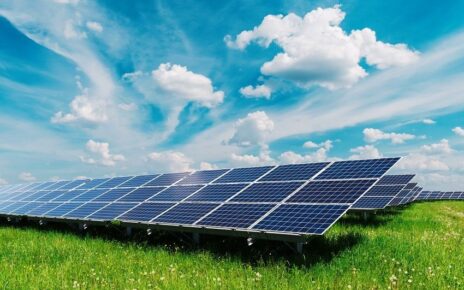Key Takeaways:
- Water mitigation refers to the process of preventing or minimizing damage caused by water.
- Water damage can lead to deterioration, mold growth, and compromised building integrity.
- Ignoring water damage can result in major problems, including mold growth and structural instability.
- Water mitigation is vital to protect property, prevent health risks, and maintain property value.
- Identifying common sources of water damage and implementing preventive measures are crucial.
- Water mitigation professionals have the expertise and equipment to effectively address water damage.
- Water damage can have a significant impact on the environment, especially near lakeshores.
- Eco-friendly water mitigation techniques aim to reduce environmental impact.
- Collaborating with environmental organizations can help preserve the natural beauty of lakeshores.
- Thoroughly understanding insurance coverage and exploring cost-effective solutions are important in water mitigation.
- Working with professionals and investing in professional services can ensure effective water mitigation.
1. Understanding Water Mitigation and Its Importance
Water mitigation refers to the process of preventing or minimizing damage caused by water. Whether it’s a burst pipe, a leaky roof, or a natural disaster like a flood, water can wreak havoc on your property if not addressed promptly and effectively. Understanding the science of water damage is crucial in order to grasp the importance of water mitigation.
The Science of Water Damage
Water damage occurs when excessive moisture infiltrates a structure. This moisture can enter through various sources such as heavy rainfall, plumbing issues, or even insufficient insulation. Once inside, it can seep into walls, floors, and other structural components, causing deterioration, mold growth, and compromising the integrity of the building.
Additionally, water damage can lead to secondary issues such as electrical hazards, weakened foundations, and health risks due to mold and bacteria growth. It’s important to understand that water damage can not only harm your property but also pose a threat to your health and safety.
The Dangers of Ignoring Water Damage
Ignoring water damage can have severe consequences. What may initially seem like a minor issue can quickly escalate into a major problem, leading to extensive repairs, costly renovations, and even the loss of personal belongings.
One of the primary dangers of ignoring water damage is the rapid growth of mold. Mold thrives in moist environments and can start to develop within 24 to 48 hours after water intrusion. Exposure to mold can trigger allergies, respiratory issues, and other health problems, particularly for individuals with compromised immune systems.
Furthermore, water can weaken structural components over time, compromising the stability of your property. This can lead to sagging ceilings, warped floors, and in extreme cases, even collapse. Delaying water mitigation can significantly increase the risk of irreparable damage to your home or building.
Why Water Mitigation is Vital
Water mitigation is vital to protect your property and preserve its value. By addressing water damage promptly and effectively, you can minimize the extent of the damage and reduce the need for costly repairs down the line.
Implementing proper water mitigation strategies can help prevent mold growth, structural deterioration, and the associated health risks. It also ensures the safety and well-being of the occupants by eliminating potential electrical hazards and maintaining a healthy indoor environment.
Moreover, by investing in water mitigation, you are safeguarding the long-term value of your property. Timely mitigation measures can help maintain the structural integrity and aesthetics, preventing extensive damage that may devalue your property or require extensive renovations.
2. Effective Strategies for Water Mitigation
Preventing water damage in the first place is the best way to mitigate its potential impact. By identifying common sources of water damage, implementing preventive measures, and seeking professional assistance when needed, you can ensure the protection of your property.
Identifying Common Sources of Water Damage
Understanding the potential sources of water damage is crucial in order to address them effectively. Some common culprits include leaky pipes, malfunctioning appliances, damaged roofs, inadequate drainage systems, and natural disasters such as floods or storms.
Regular inspection and maintenance of these areas can help identify potential issues before they escalate. Pay attention to signs such as damp spots, discoloration, musty odors, or unexplained increases in water bills, as these can indicate hidden leaks or water damage.
Preventive Measures to Protect Your Property
There are several preventive measures you can take to protect your property from water damage. Installing proper insulation, sealing gaps and cracks in the building envelope, and ensuring adequate ventilation can help prevent moisture buildup and condensation.
Regularly maintaining your plumbing system, including inspecting and repairing leaks, can also significantly reduce the risk of water damage. Additionally, ensuring the proper grading and drainage around your property can redirect water away from the structure, mitigating the risk of floods or foundation damage.
It is also advisable to install water detection devices that can alert you to potential leaks or water intrusion. These devices can provide an early warning system, allowing you to take immediate action and minimize the impact of water damage.
The Role of Professionals in Water Mitigation
While preventive measures can go a long way in mitigating water damage, there are instances where professional expertise is necessary. Water mitigation professionals are skilled in assessing and addressing water damage effectively, minimizing the impact on your property.
These professionals have the necessary equipment, such as moisture meters, infrared cameras, and industrial-grade drying machines, to accurately identify the extent of the damage and devise an appropriate mitigation plan. They can also implement specialized techniques to extract water, dry affected areas, and restore your property to its pre-damage condition.
By entrusting the task to professionals, you can have peace of mind knowing that the water mitigation process is being handled efficiently and effectively, reducing the risk of further damage and ensuring the best possible outcome.
3. Preserving the Natural Beauty of the Lakeshore
Water damage not only affects the integrity of our homes and buildings but also has a significant impact on the natural environment, particularly in areas like the lakeshore. Preserving the natural beauty of these landscapes requires a holistic approach to water mitigation.
The Impact of Water Damage on the Environment
When water damage occurs in areas near lakeshores or other bodies of water, it can have devastating effects on the surrounding ecosystems. Excessive runoff, contaminated water, and soil erosion can disrupt the delicate balance of these environments and harm plant and animal species.
Water damage can lead to the introduction of pollutants, such as chemicals and sewage, into the water bodies. These pollutants can contaminate the water, affecting aquatic life and posing a threat to the entire ecosystem.
Additionally, erosion caused by excessive water flow can result in the loss of fertile soil and vegetation, further exacerbating the environmental impact. Preserving the natural beauty of the lakeshore requires implementing eco-friendly water mitigation techniques.
Eco-Friendly Water Mitigation Techniques
Eco-friendly water mitigation techniques focus on minimizing the environmental impact of water damage restoration. These techniques aim to reduce energy consumption, waste generation, and the use of harmful chemicals.
One such technique is the use of advanced drying technologies that consume less energy and have a lower carbon footprint. These technologies utilize efficient dehumidifiers and air movers to remove moisture from affected areas, reducing the drying time and energy usage compared to traditional methods.
Recycling and proper disposal of water-damaged materials is another vital aspect of eco-friendly water mitigation. By segregating and recycling materials whenever possible, we can reduce the amount of waste sent to landfills.
Lastly, using non-toxic, biodegradable cleaning agents during the restoration process can help minimize the introduction of harmful chemicals into the environment. These eco-friendly alternatives are equally effective in disinfecting and sanitizing the affected areas without compromising the natural ecosystems.
Collaborating with Environmental Organizations
Preserving the natural beauty of the lakeshore requires collaboration between property owners, water mitigation professionals, and environmental organizations. By working together, we can develop strategies and initiatives to protect the environment while effectively mitigating water damage.
Environmental organizations play a crucial role in raising awareness about the importance of water mitigation and its impact on natural ecosystems. They can provide valuable guidance on sustainable practices, promote policy changes, and initiate community-driven initiatives to protect the lakeshore and its surrounding areas.
By supporting and actively participating in the efforts of these organizations, individuals and communities can contribute to the preservation of the natural beauty of the lakeshore for future generations.
4. Insurance and Financial Aspects of Water Mitigation
In addition to the physical and environmental impacts, water damage can also have financial consequences. Understanding the insurance coverage and exploring cost-effective solutions can help alleviate the financial burden associated with water mitigation.
Navigating Water Damage Insurance Claims
When it comes to water damage insurance claims, it’s essential to thoroughly understand your coverage. Review your insurance policy to determine the extent of your coverage, including the specific causes of water damage and any exclusions.
Documenting the damage through photographs and detailed descriptions is crucial when filing an insurance claim. It’s important to act quickly and notify your insurance provider as soon as possible to initiate the claims process.
Working with a public adjuster or a water damage restoration company that specializes in insurance claims can help ensure a smoother and more successful claims process. These professionals can assess the damage, provide a comprehensive estimate for repairs, and negotiate with the insurance provider on your behalf.
Cost-Effective Solutions for Water Mitigation
Water mitigation can be a costly affair, but there are several cost-effective solutions that can help minimize expenses while still effectively addressing the damage. Implementing preventive measures, such as regular inspection and maintenance of plumbing systems, can help identify and resolve issues at an early stage, preventing more extensive and costly damage.
Additionally, prompt response and mitigation measures can significantly reduce long-term costs. Acting quickly to extract water, dry affected areas, and prevent mold growth can prevent further damage that may require extensive repairs and renovations.
However, it is important to strike a balance between cost-effectiveness and the thoroughness of the mitigation process. Cutting corners or opting for subpar solutions may initially save money but can lead to greater expenses in the long run. Investing in professional water mitigation services ensures quality workmanship and long-term protection for your property.
The Value of Investing in Professional Services
While there are cost-effective measures you can take to mitigate water damage, investing in professional water mitigation in the Lakeshore offers several advantages. Professionals have the necessary expertise, experience, and equipment to accurately assess the damage and implement effective solutions.
By hiring professionals, you can avoid potential pitfalls and ensure the mitigation process is carried out in a timely and efficient manner, minimizing the risk of further damage. Additionally, professionals can help navigate complex insurance claims, potentially maximizing your coverage and minimizing financial strain.
Furthermore, professional water mitigation services provide peace of mind. Knowing that your property is in capable hands allows you to focus on other aspects of recovery while ensuring the best possible outcome.
In conclusion, water mitigation is a vital process that protects your property, preserves the natural beauty of the lakeshore, and safeguards the well-being of individuals and the environment. By understanding the science of water damage, implementing effective strategies, collaborating with environmental organizations, and exploring insurance and financial aspects, you can ensure comprehensive mitigation of water damage. Remember, prevention is key, but when water damage occurs, timely and effective action is crucial to minimize the impact and restore your property to its pre-damage state.




